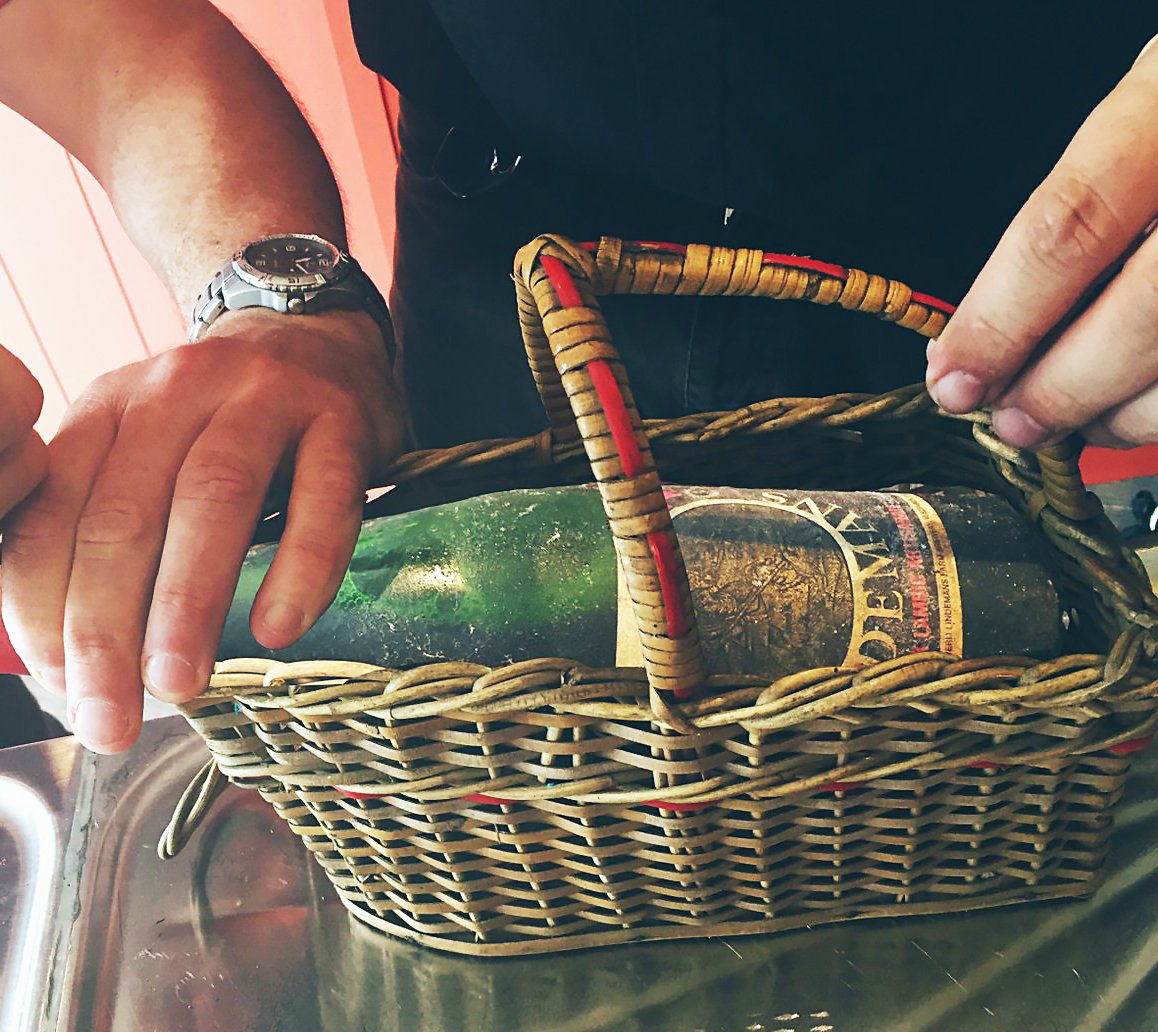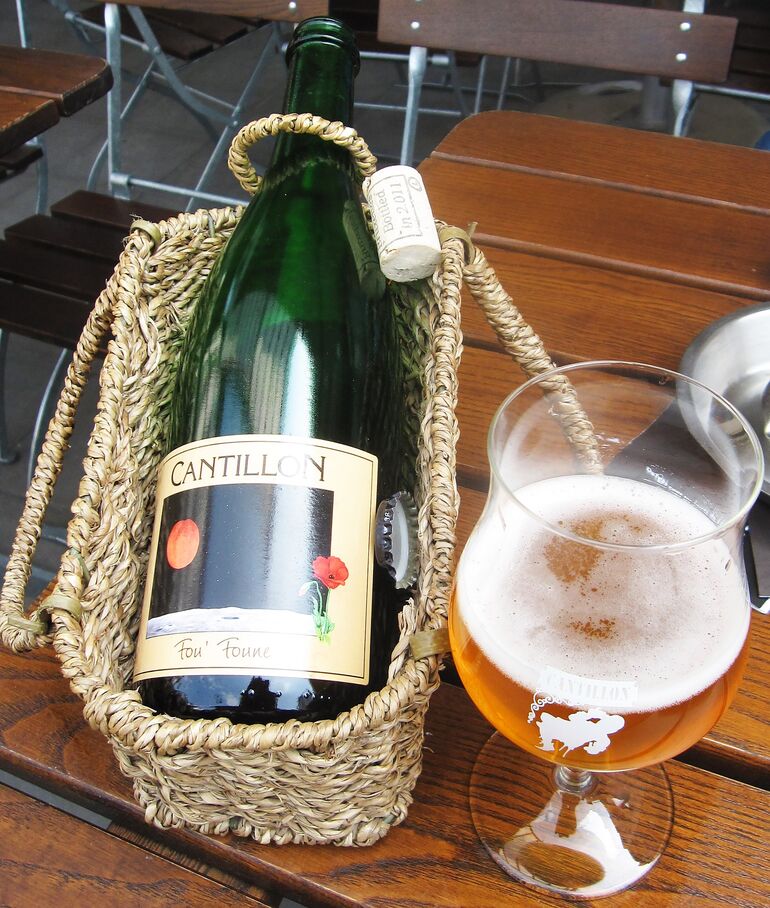Start 14-Day Trial Subscription
*No credit card required

The Lambic Basket
Much like the vineyards of Bordeaux and the peat-covered terrain of Islay carry centuries-old wine and scotch traditions, the region surrounding the Senne River in Belgium is steeped with one of the oldest beer traditions in the world: lambics. Until the past couple of decades, lambics were drowned out by the mystique of Belgian Trappist ales. Thanks to the global craft beer movement’s interest in sour beers, the once dying style – along with its singular storage container, the lambic basket – has not only been rejuvenated in its homeland of Brussels but replicated the world over.
“The style almost died at the end of the 1990s,” says Luc De Raedemaeker, director of the Brussels Beer Challenge and chief editor of Bière/Bier Grand Cru. “Now it’s quite popular again.”
Both brewers and beer servers have sought to maintain the traditional methods of brewing the style: an ale brewed from unmalted wheat, malted barley and aged hops that’s spontaneously fermented via open air vats called coolships and aged on wood for up to three years. They also have kept alive the practice of serving the style in its traditional, distinctive basket.
The two most common types of lambics that are served from baskets are fruit lambics and gueuze, the latter of which is a blend of one-, two- and three-year-old lambics. Both types are aged on their sides after bottling, where sediment forms from yeast and fruit particles. Lambic baskets are used to keep the bottles as close to the horizontal position as possible ‒ between 20 and 23 degrees ‒ when pouring to help prevent flavor-altering sediment from entering the glass.

Many beers that can be enjoyed via Lambic baskets are brewed in coolships, which are large, open-air vats that allow wild microbacteria to inoculate within the beer during fermentation.
Photo Courtesy Allagash Brewing
While there isn’t much documentation on the history of lambic baskets, it’s thought that they were adapted from wine baskets commonly used in French wine country for similar sediment-removing purposes. “There’s always been a lot of influence between Belgium and France,” says Joe Stange, co-author of the Good Beer Guide to Belgium. “It makes sense that Belgians started using them for beer.”
Like much of the pomp surrounding Belgian beer, the baskets also serve as a form of showmanship. “They help set the scene when you’re sitting in a café,” says Stange. “It helps show that the bottle of lambic was cellared properly.”
He admits that the baskets are only really useful if the beer has been kept on its side, which typically applies to cellared vintages and not recently purchased releases. Still, it’s a great way to impress friends and add ambiance to a dinner party or bottle share.
“It’s classic ‘form following function,’” adds Mike Fava, head brewer at Oxbow Brewing Company in Maine, which serves their coolship beers from lambic baskets. Oxbow Brewing is one of a growing number of U.S. breweries not only replicating the methods employed by the dozen or so breweries producing traditional lambics in Belgian, but also in properly storing and serving the beer. While their beers won’t taste exactly like the fabled lambics of Belgium, they promise a terroir all their own.
6 Beers to Enjoy in a Lambic Basket
Cantillon’s Classic Gueuze
Cantillon’s Classic Gueuze is considered by many aficionados a quintessential representation of gueuze. The beer has been awarded a four-star World Classic rating by the Beer Hunter, the late Michael Jackson, and a five-star World Beater by Tim Webb, co-author of Good Beer Guide to Belgium. Expect a balanced blend of tart pineapple and citrus over refined nuances of earth and barnyard funk. It’s the kind of beer to be studied with each sip, noticing the differences as it warms and breathes.
3 Fonteinen’s Oude Gueuze
3 Fonteinen’s Oude Gueuze is a classic much like the previously mentioned Cantillon. However, the method of coming to the final product is slightly different. 3 Fonteinen blends their own lambics with those from two other breweries in the Brussels region. The champagne-like effervescence brings forth a fruit salad of peach, apricot, pineapple and lemon joined by barnyard funk, clean acidity, and a lightly oaky character.
Lindemans’ Oude Kriek Cuvée René
The base of Lindemans’ Oude Kriek Cuvée René is their original Kriek ‒ a six-month-old lambic aged in 10,000-liter foeders with whole cherries ‒ bottled after six months and laid to rest for refermentation. The resulting beer has earned a trophy case of awards and accolades. On the nose, expect childhood memories of a sweet and tart homemade cherry pie with an oddly balancing almost musty backbone. The beer then drinks like a fine wine, each sip opening up to notes of sweet and tart cherries, hay, lemon and anise with a slight almond aftertaste, all over a hefty, almost chewy, mouthfeel.
Allagash Brewing’s Coolship Resurgam
“When we started our coolship project in 2007, nobody was making spontaneous beers outside of this magical area of the Brussels region,” says Jason Perkins, Allagash Brewmaster. Three years later, the Maine brewery’s attempt at a gueuze blend combining one-, two- and three-year-old spontaneously fermented beers hit shelves. Coolship Resurgam is less refined than its Belgian kin with hints of apricot slightly overpowered by acidic tropical and citrus fruit notes. Time will allow more of the musk to develop and the tartness to mellow into a beautiful fruit medley.
Oxbow Brewing’s Native Wild 1516
“We got invited to pour Native Wild at the ‘Night of Great Thirst’ this year,” says Mike Fava, in reference to the International Gueuze and Kriek Festival in Belgium. “Oxbow was the second non-Belgian brewery to ever be invited. It was the pinnacle of my career.” Unlike Allagash, Oxbow isn’t attempting to recreate a gueuze on American soil. Instead, the beer that comes from their front porch coolship is a blend of two Gueuze vintages aged for 18 months. Be prepared for a bouquet of apricot and peach followed by aggressive tart and funk and an oakiness found in homemade wine.
Black Project Spontaneous and Wild Ales’ Roswell: Grudge
Grudge is part of Black Project’s Roswell series. The idea behind the series is to showcase what the brewery calls “super-fruiting” a lambic-inspired, spontaneously fermented ale. A substantial amount of fruit is added during refermentation, including apricot, blackberry, cranberry, guava, blueberry and raspberry. Grudge is the raspberry edition. It’s fruit forward on the nose with a slight tartness and heavy notes of vinegar on the tongue. This beer will mellow with age and be perfect for serving from a lambic basket.
As lambics surge in popularity, baskets have evolved to hold more than just the champagne-style bottles they were designed to handle. Today, these hard-to-find trinkets of breweriana not only come in 750-ml but also 375-ml, 500-ml and 1.5-liter sizes. Likewise, lambic-style beers are evolving as breweries around the world achieve spontaneous fermentation with coolships. Expect breweries to push the limits of traditional fruits, like Black Project with Guava and blueberry, and inventive ways to capture wild yeast like the use of mobile coolships.

Lambic baskets are used to keep the bottles as close to the horizontal position as possible, preventing flavor-altering sediment from entering the glass.
Photo Courtesy Twitter/Lindemans Brewery




